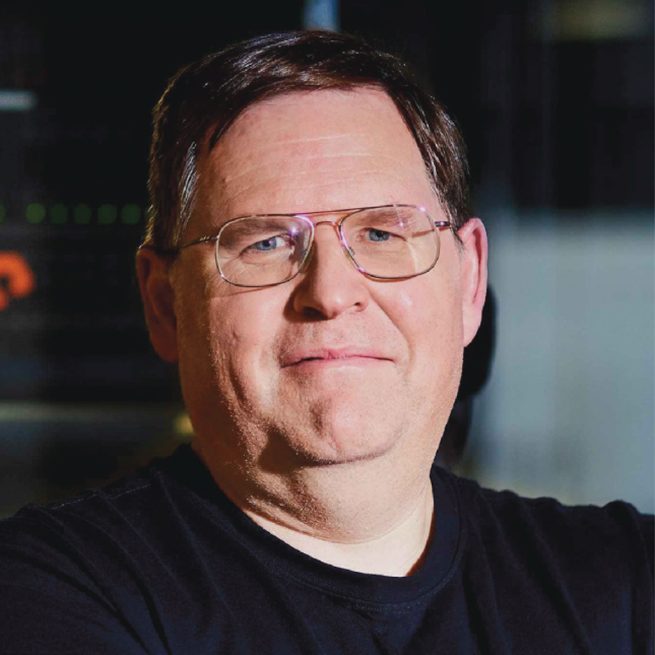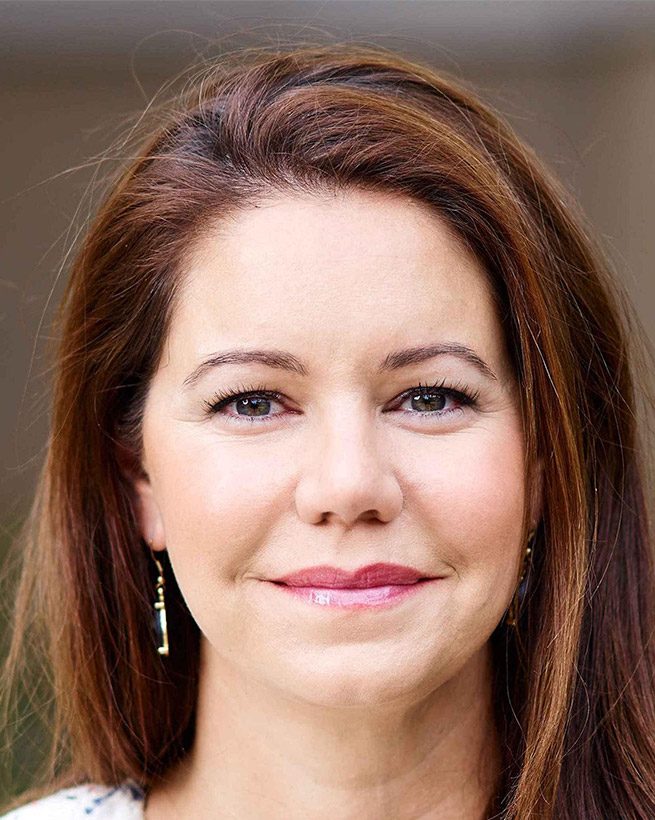00:05
Please. Welcome to the stage. Our founder and chief visionary officer. I like to call him the Wizard of Cause and general manager of Flash Blade. Amy Fowler. Mhm. So, cause what did you think about what you heard yesterday? Uh, well, you know, Charlie talked about our
00:40
four sustainable advantages, and I love all four of them. I love Evergreen. Uh, but my favourite really is, uh, the pace of innovation and flash. And what we're doing there doesn't surprise me, but I guess the question is, how big of a deal is this really right. Is this just another super cool set of product and feature announcements,
00:59
or are we at some kind of meaningful inflexion point right now? Um, I I think we are at a monumental inflexion point. In the words of Doc Brown from back to the future where we're headed, we don't need any disc. That's exactly what he said. So, Amy, um, you know,
01:19
you've been with us for 10 years. What have you seen? Well, in the past 10 years. Let me think if memory serves 10 years ago, disc drives were about four terabytes. I think you have one right there. which was pretty good relative to when they were first introduced decades before that at a few megabytes and something the size of, like, a washing machine.
01:39
Uh, and we were shipping 512 Gig s SDS. We were still in off the ship s SDS at the time. Um, they look like that. We could put about 22 of them in the system for about 5.5, Not about terabytes. Right? But what's amazing is that in just these past 10 years, well, disc has gotten to, like 2024 terabytes. So looks like that still takes the same amount
02:02
of power to spin. And cool flash, as we've seen are flash. We've got D FMs at 48 terabytes for quite some time now, we can put 200 of them into a single flash blade. So that's about 10 petabytes in a single system. So pretty big changes. Uh, yeah, it is. And you know, we now we're coming out with
02:20
these guys. This is 75 terabyte modules coming out with that later this year, and we're going to be able to put 30 terabytes or 30 petabytes in a single system. Um, you know, you think about how much that's changed over the years. It's just awesome. Yeah, it's I mean it. It is really tremendous.
02:39
So to recap, let's do a little math. 10 years disc improved by a factor of about five. And that same 10 years, our density got 100 and 50 times better. So that's just at the media level, right? So I guess the the question I have is Are we gonna make d f MS that are 100 and 50 times bigger than they are now.
02:57
A decade from now, Um, you know, that would be an 11 and a quarter petabyte, uh, module. I think that's probably a little bigger than, uh, we might get to, but only a little bit. Um, you know, to give you an example. This is a mockup of 100 and 50 terabyte module that will ship towards the end of next year, and we don't need to invent some wonderful new
03:20
physics for it. Uh, as the disguise are struggling to grow. Uh, this is the same flash chips that we have on the 75. Just we've managed to put twice as many of them, uh, on onto the module, and we managed to cool them properly. So 100 and 50 we're gonna go to 300 the year after that, Uh, as we get some new And you know, the nad isn't being driven by s SDS.
03:44
It's being driven by billions and billions of cell phones and other devices that want to keep packing it so that road map is not gonna stop after 300 terabytes will go shortly. Not I'm not gonna say right the year after, but we will soon go to 600 even a petabyte in a module. And it's just, you know, as this keeps struggling to grow, the gap is going to widen and widen year after year,
04:11
from disc to flash. And it's just huge. It is huge. Um, and it's kind of wild to think about, um, you just mentioned, you know, 30 something, right? So if we were selling a petabytes of flash a petabyte of flash, you know, 10 years ago, uh, which I wish we were, But no one was buying a petabyte of flash
04:29
10 years ago. Um, it would have taken about 34 racks, right? And we're right around the corner from fitting 100 petabytes in one rack. Right? So that's 3000 times more efficient in just one decade. So I guess the other big question is really right.
04:45
How come all the storage vendors aren't gonna be able to keep up with us on this curve? Why won't they be able to close? You know, continue to extend that gap with off the shelf s SDS. So, um, you know, it's really there's a couple of keys. Uh, one is the purity software.
05:00
Uh, so what we've done is we've taken all of the complex functions out of the device and moved it into the software in our controller, Uh, it allows us to build much simpler devices that don't fail as often. And if when you think about it when I talk to you about building a 300 a 600 terabyte D f. M, the first thing you think is Oh, my God, what happens when one of them fails?
05:23
Well, our direct flash modules are already failing at about 1/6 the rate of s SDS, and they're just gonna keep getting better with that, it's because we've taken all the complexity out of them and we've handled those problems in the software. So the ware levelling the garbage collection, Uh, all of that sort of flash management. It's all in our controllers rather than in the, uh, direct flash modules.
05:47
Uh, the other thing is, if you open up an S S d because they have all that complexity inside, they actually have about one bite of D ram for every 1000 bits of nad take a 30 terabyte s s d Open it up. You'll see roughly 30 gigabytes of D ram. Take a 300 terabyte S S d and you'd open it up, you'd need to see 300 gigabytes of D RAM and you can't fit that.
06:16
It's not, uh, as reliable. That's a cause of failures. It takes up power, it's expensive. And with things like that, I mean, the gap is going to keep widening between a direct flash approach and an s S D based approach. And, you know, dis is done.
06:33
S SDS are not the answer. It's direct flash. That's the answer. And it's the software and purity that we've been working on for 10 years. So since Amy started with this 10 years ago, we've been working on that software. We've been making it better year after year. And that's the secret sauce that drives the gap.
06:49
You should take more credit for that. Must have been the catalyst, right? Um all right, so this is all super exciting. Um, but I think the real key here is in terms of this widening gap that we have is that it's really about how these huge leaps in technology can impact everyone in this room. Right. How does this impact our customers?
07:03
Because when big seismic shifts like this happen, things materialised that we couldn't previously have even conceived of, right? New concepts, new businesses, new jobs, new ways of life. And, you know, Charlie talked yesterday about that transition from, um LP s to C DS and how fast that happened. You know, the paradigm that that I think about,
07:23
uh that has affected our lives in a in a different way is how we watch TV, right? Like, remember, T g i f. We used to, like want to be in front of the TV at a certain time on Friday nights. At least that was That was my life in the in the eighties. I mean, with streaming services.
07:38
It's completely changed how we watch TV, how we live our lives in a in a big way, right? And I mean, now we have binge watching, right? Like, who thought that was gonna happen? Uh, Amy, have you binge watched anything interesting lately? Uh, OK, so I watched this show. Um that people have been telling me about for
07:54
years, though, like you have to watch it. It's called the Big Bang Theory. OK, I'm glad that you guys are watching it. You get that right. So anyway, yes, I I quite enjoyed it. How about you? You've been watching, You know, I don't have time to binge watch. I'm too busy trying to rid the planet of spinning rust.
08:09
OK, It's probably a much better use of time. We'll give you that, and it's definitely a very big deal. Uh, but, you know, in both cases, when a mainstay of life goes into obsolescence, whether it is t g i f. Or it is disc drives, we're like, we're we're witnessing history, right?
08:23
Like, this is this is a pretty big deal um, you know, it is, uh, history. And replacing this with flash is the only way forward. You know, we've got to build really efficient data centres. The you think about the power problems, the space problems, efficient data centres. All flash data centres are the foundation for
08:42
the future. And by the way, Amy, you know, if you want, you can catch out this nice V h s tape. I don't I like I don't have a v h s player. I don't know. I didn't think my kids would know what this is. And if I was gonna binge watch something on a V H s player, it wouldn't be Star Trek, Trek three, the search for Spock.
08:59
But thank you. Ok, well, no thanks. No, no, no, no, no, no, no. Uh, I I I have watched that I don't have a player either, by the way, um, but, you know, seriously, the, uh you know, the transition to flash the capacity, the power savings, the performance. Um, you know all the software we do to enable
09:22
it. That's where the magic happens. And, you know, we're gonna help save the planet while we're doing this transition well, Helping save the planet is certainly compelling argument, and I think we'll hear more about that from Rob Lee in a bit. But first, let's hear about our next breakthrough award.
09:46
Since its founding after the Second World War, the Scottish Government, Agriculture and Rural Economy Directorate has worked hard to create food security through sustainable growth in agriculture and help small communities thrive. From flash array to evergreen to port works, the directorate has built a fertile technology landscape on pure storage. It can support online subsidy claims,
10:11
protect data and meet regulatory requirements, all while creating the next wave of agricultural advancements reliably and cost effectively in agriculture, Innovation is always in season. The Scottish Government, Agriculture and Rural Economy Directorate is this year's em greatest of all time winner for keeping Scotland's rural economy thriving and continuing to protect and
10:35
nurture a secure and sustainable food supply.


